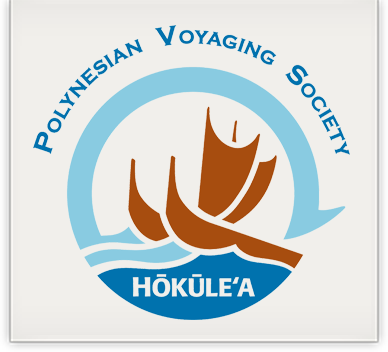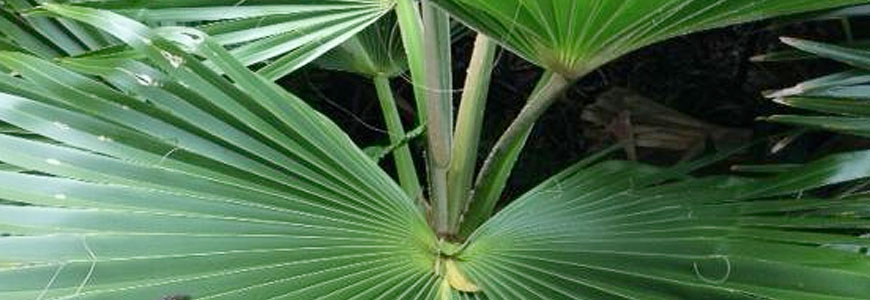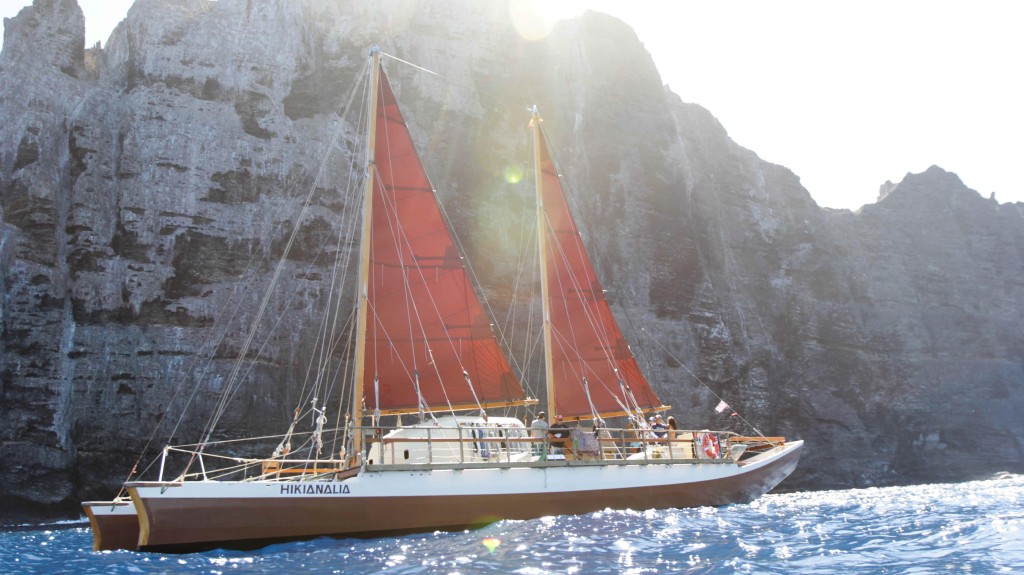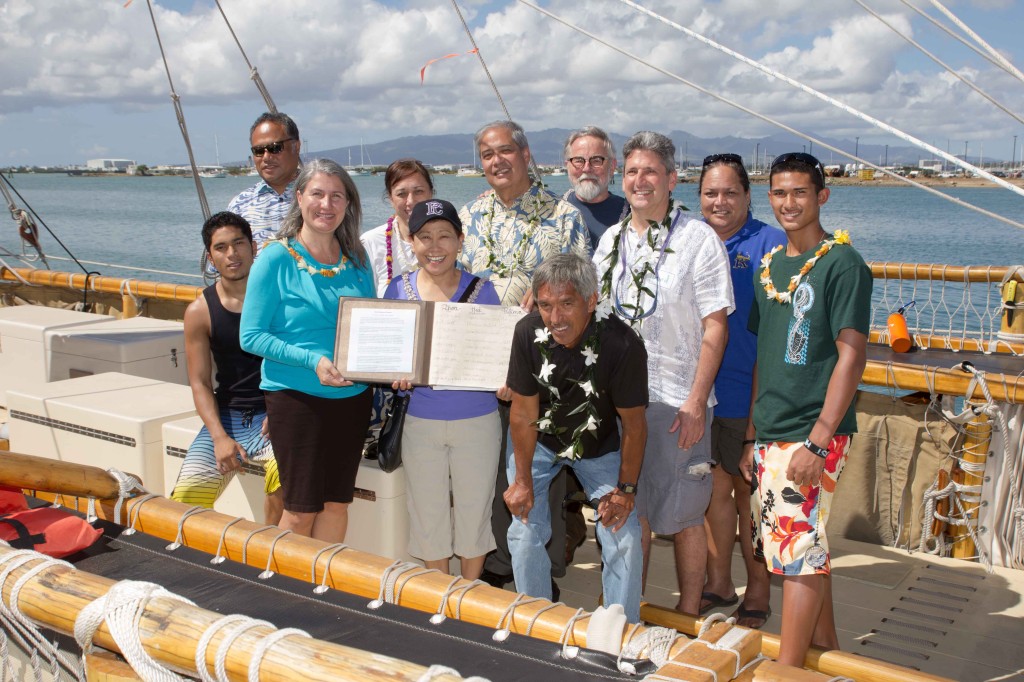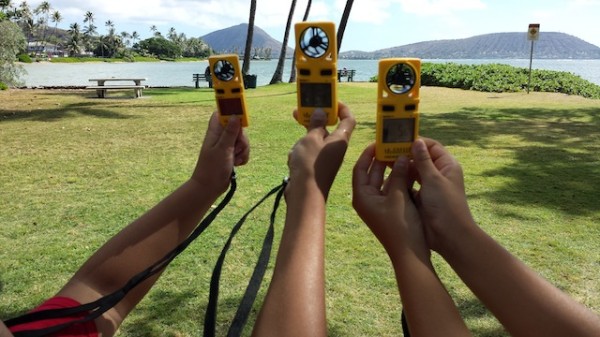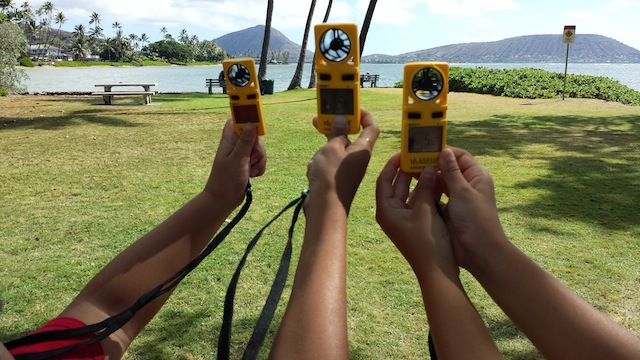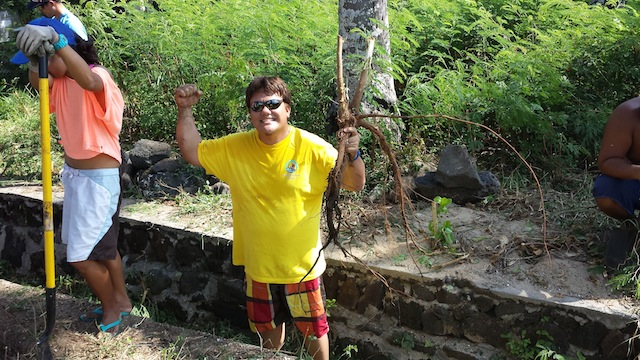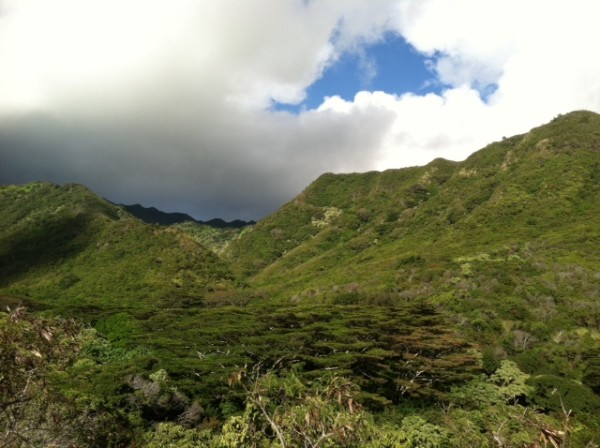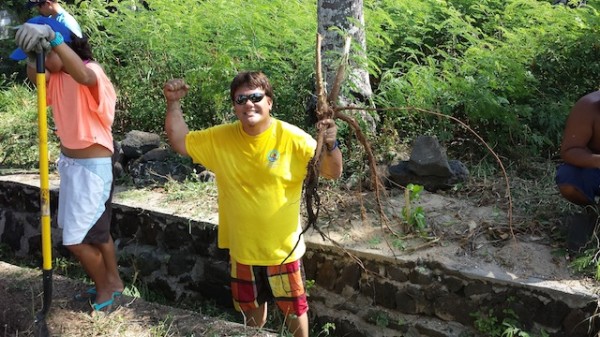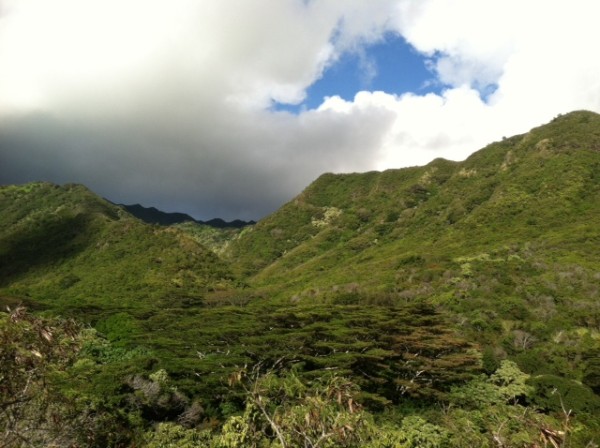Learning Journey: Kahanahaiki – Learning By Doing…
By Diane Tom-Ogata, Kimberlee Stuart, and Shari Jumalon, Ho’ala School, Wahiawa, O’ahu
Kahanahaiki is an ahupua’a (chiefdom) in the moku (district) of Waianae on the mokupuni (island) of O’ahu. Currently, Kahanahaiki is managed by both the state and federal programs that rely heavily on both paid employees and volunteer groups.
On Friday January 17, 2014, Maggie Pulver, Teacher at Hoala School & A’o Hawaii Educator, gathered thirteen Ho’ala middle school students on the lanai, along with representatives from O’ahu Army Natural Resources Program (OANRP) and A’o Hawaii Educators for a field trip to Kahanahaiki in the Wai’anae Mountains.
Kim Welch, OANRP team leader and Ho’ala School parent, conducted a safety briefing, reminding students to stay hydrated, pay attention, and keep on the trail. She also went over certain protocols in place, like using the bathroom and what to do if you get lost.
Excited students prepared to document their trip as part of a writing assignment to investigate endemic and introduced Hawaii plants with backpacks packed with their camera, phone, notebooks & food.
3 vans drove up to their destination where students clamored out of the vans to admire & take pictures of the breathtaking views of the west & north shore, large surf, hear a brief summary of the area and brush off their shoes to prevent the transfer of alien seeds, bacteria, etc into the preserve.
At the entry of the red path, an ‘oli, “E Ho Mai”, was presented asking for wisdom to be bestowed upon the participants where a special kind of learning would take place in this forest.
While trekking up the slippery, and at times steep, path students assisted each other and provided words of encouragement. The group periodically stopped along the trail to learn about particular plants referring to vocabulary which were introduced to earlier in the week (indigenous, endemic, parasitic, etc). They observed markers where planted propagated endangered plants are monitored, identified & learned about the importance and how the native plants were used in Hawaiian culture.
At one point a 3 foot high corrugated metal exclosure suddenly appeared: one of the first built for the protection of Kahuli, the endemic Hawaiian Tree Snail, from unwanted predators like rats, Jackson Chameleons, and carnivorous snails.
Here excitement filled the air with the spotting of a Kahuli.
The Kahuli are hermaphrodites that reside on the same plant for its entire lifespan & have approximately 4 live births per year.
Arriving at the beautiful vista with a stunning view of makua valley and beach, all sat to eat lunch while enjoying the view, the incoming shrouding clouds and each other through reflection conversation.
After recharging at the summit, the group headed back to the vans but stopped to take back a planting stand that was no longer needed.
Throughout the hike, it was evident through student actions they shared a mutual admiration for each other and respect for the environment.
This truly was a huaka’i ‘imi’ike (a journey to see & learn) with laulima (working together) interlaced, where students learned the importance to malama honua as well as malama i kekahi i kekahi, where the message of the World Wide Voyage to “Malama Island Earth – our natural environment, children and humankind” was evident.
Note: An ahupua’a is a traditional Hawaiian type land division, similar to a town. However, unlike “modern” land divisions, ahupua’a stretched from mauka (mountain) to makai (ocean), and usually included a source of wai (water). This helped to ensure that anyone living in the ahupua’a would have access to all of the resources they needed to survive.
